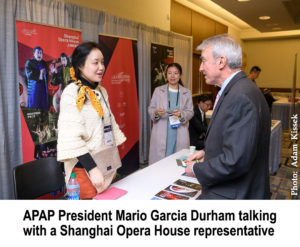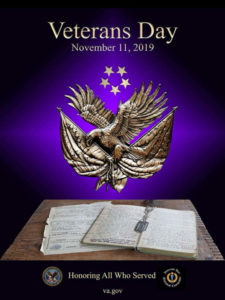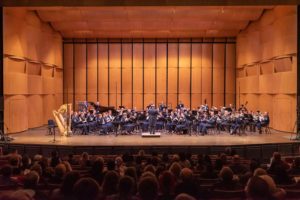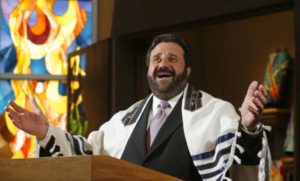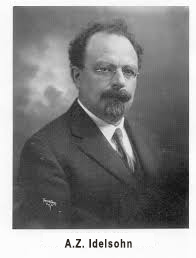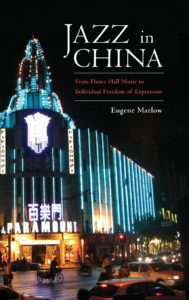There are no immediate or forecasted statistics, but just from the anecdotal evidence, it’s apparent a goodly portion of freelance musicians of various stripes are going to have a rough time financially for the next few months: paying monthly bills, buying food, and taking care of their health. Why? Because the coronavirus has caused gig cancellations, postponements, closures, shut downs, and travel restrictions—all in the name of slowing down the spread of the virus, a so-called “flattening of the curve.”
The truism “If you don’t have your health, you don’t have anything” was never more real than now.
Of course, it’s not just musicians. Artists of all kinds, freelancers, and hourly workers are caught in this pandemic whirlpool. Part of the problem, and perhaps the major part of the problem, is that many are not financially prepared for a three, six, or nine month income gap, even with unemployment insurance, which is meagre at best.
Is the current pandemic the end of the world? No, it isn’t. It’s not the first global health crisis (remember the influenza epidemic of 1918, only 102 years ago) and it’s not the last. To put this another way, with many people on temporary work hiatus, quarantined, or sheltered at home, this is also an opportunity: an opportunity to use this “down time” to “up-scale” your personal and professional life.
Following are 52 recommendations you can apply today:
 Health:
Health:
1. Per the CDC, Stay home if you are sick. Avoid close contact with people who are sick.
2. Cover your nose and mouth with a tissue or sleeve when sneezing or coughing.
3. Wash your hands often with soap and water for at least 20 seconds.
4. Use an alcohol-based hand sanitizer when hand washing is not possible.
5. Avoid touching your eyes, nose, or mouth.
6. Ward off isolation. Contact friends and relatives, whether locally, in the state, out of state, or internationally. They will want to hear from you. And you will want to hear from them. Contact, even at a distance, is still a human need.
7. Keep a regular, daily routine to ward off depression: get up the same time, take a shower, get dressed, and keep up with activities you can do at home.
8. Maintain good nutrition: eat healthy, eat light so you don’t get weighted down or gain weight. Resist the urge to binge out of depression.
9. Look online for healthy but satisfying recipes.
10. Buy food and sundries in bulk as much as you can. If you have a large enough freezer, stock up on frozen foods. Buy as much can goods as possible.
11. Shop around. Walmart, Amazon, Fresh Direct, Pea Pod, among others, have on-line grocery and sundry stores that deliver to your door. Check them out to see which have the best prices for what you need. Perhaps you’ll need to order from more than one place to get the best prices.
12. Cut back on take-out. If you eat take-out, the food is going to be more expensive than if you make it at home. Moreover, food from a restaurant probably contains more salt than you should ingest. Less salt is better for your health.
13. Physical activity is good for one’s mental and emotional health. Exercise at home. When working outside the home you’re moving, using your whole body. The Cleveland Clinic recommends 10,000 steps a day. If you’re working from home, you risk become more sedentary. Find a place in your living room to do some stretches, push-ups, and sit-ups. Have free-weights? Work with those as well. Live in an apartment building? Go into the hallway and walk for about 10-15 minutes. Climb a few flights of stairs.
14. Equally important, take a few minutes every day to meditate, to be calm, and quiet your mind.
15. Do you smoke? Apply to an online “Stop Smoking” program. Just think of all the money you’re going to save when you don’t smoke anymore.
16. If in psychotherapy, use phone, Skype or FaceTime to continue the sessions. The consistency will help with anxiety and provide a bit of normally in these unusual times.
17. Take an aromatherapy, Epson salts, or bubble bath to relax.
18. Limit media intake to maintain your sanity.
Finances:
![]() 1. Pay your bills on time, especially your credit card bill. Don’t wait until the last minute. Paying your credit card bill sooner rather than later should reduce the amount of interest you pay.
1. Pay your bills on time, especially your credit card bill. Don’t wait until the last minute. Paying your credit card bill sooner rather than later should reduce the amount of interest you pay.
2. Pay more than the minimum amount on your credit card. Paying the minimum keeps you in debt.
3. Make sure you do your taxes and submit them on time. The IRS has extended the deadline to July 14, but you need to file an extension by April 15.
4. Develop a quarterly net worth statement. You may discover you’re in better shape than you think—your instrument is part of your net worth. Or perhaps you’ll discover you have some systemic financial issues, like too much long-term debt.
5. Having a net worth statement gives you more control over your finances. If you don’t know what a net worth statement is, search the Internet for examples.
6. If you foresee you’ll have a problem paying next month’s rent, contact your landlord now. Better to talk with your landlord before there’s a problem than after. You’ll be in a stronger position before there’s a problem than after.
7. If you foresee you’ll have a problem paying your next month’s mortgage, contact your mortgager now, for the same reasons as above. This will also help protect your credit score from being affected.
8. Create and analyze your monthly expense budget.
9. Identify some way to spend less on something. Everybody has a bad spending habit someplace. Discover yours and start saving.
10. Search your home for loose change. Even if you find $10-$20 of loose change, that’s money to buy food with today.
Professional Development:
![]() 1. Networking is important. Maintain your network via phone, email, or text to keep up-to-date and top-of mind.
1. Networking is important. Maintain your network via phone, email, or text to keep up-to-date and top-of mind.
2. Stay in touch with those decision makers who shut down, postponed, canceled, closed, put on hold, or travel restricted you from a gig. Use the phone, Face Time, Skype, email, or text to stay in touch with these people.
3. Make a list of potential contacts for a gig in an area you hadn’t explored. Decision- makers are also planning what to do when the pandemic lifts. This performance hiatus is also an opportunity to open some doors.
4. Read those articles in the trade publications you’ve been wanting to get to now that you have the time.
5. Practice that piece you’ve always wanted to work on.
6. Practice exercises to keep up or improve your technique.
7. Work on sight-reading.
8. Expand your repertoire. Work on a piece that’s outside your comfort zone.
9. Compose that piece that’s been rattling around in your head for the last few months.
10. Listen to albums that you haven’t been able to get to because you’ve been too busy before this health crisis.
11. Organize your music library. What do you need? What don’t you need anymore?
12. Seek out a professional organization you’ve wanting to investigate and perhaps join.
13. Review the professional organizations you do belong to and decide which one you don’t need to belong to anymore.
14. Write an article about a subject close to your artistic heart and send it to a professional journal or trade publication. Perhaps there’ll run it!
15. so far. What is your unique selling proposition? In other words, use this time to define yourself or even re-define yourself. Perhaps you’ll uncover things about yourself that can be useful in expanding your career.
16. Reach out to artists in other diAnalyze your career sciplines (e.g., if you’re a musician, reach out to someone in the fine arts) and explore the possibility of a collaboration.
17. Update your web site (if you have one). Make sure it’s devoid of spelling errors and has all your most recent accomplishments.
18. Update your email contacts.
19. Update your social media accounts.
Personal Organization:
![]() 1. Go through that closet or the papers on your desk at home you’ve been wanting to get to but hadn’t had the time.
1. Go through that closet or the papers on your desk at home you’ve been wanting to get to but hadn’t had the time.
2. It’s spring. Spring clean and de-clutter your home. If you’ve already started, accelerate the pace.
3. Go through all those emails you’ve been meaning to get to and delete those that don’t matter and respond to those that do. Perhaps one of those emails will lead to a future gig.
4. Go through your physical things and find items to donate or get rid of: clothes, furniture items, books, even CDs (yes CDs). Donations to the right 501c3 organization are a tax deduction. This way you can save some on your Federal, state, and city taxes, and perhaps get a larger refund.
5. Add actionable ideas to the above list.
Don’t wait until tomorrow or next week. This time is an opportunity. Take action now!
© Eugene Marlow, PhD, MBA 2020




